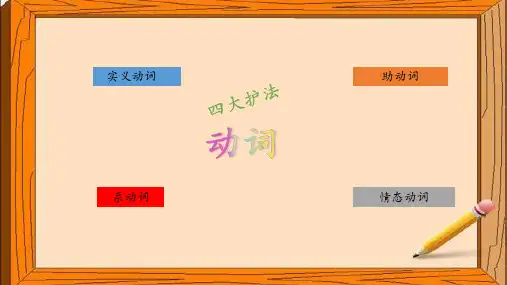may和might
1.都表示“可能,可以,请求,许可,祝愿”, might的语气较为委婉。 对may开头的问句,肯定回答用Yes,you may.或Yes, please. 否定回答用No,you mustn’t./No,you can’t. Your homework. -May I use your pen? -Yes, you may./No, you mustn't/can’t. May you be happy.
动词+副词 宾语是名词,可置于副词后面,亦可置于动词和副词之间。 宾语是人称代词和反身代词,只能置于动词和副词之间。如: wake up, put down, turn on, turn down, pick up, work out, threw away, think over, find out, give up, put on, take off, look up, bring up, set up等He walked out the math problem. = He walked the mast problem out. Don't wake me up. (不说Don't wake up with me. )
考点3 情态动词
情态动词表示讲话人的情感、态度和语气。本身具有 一定的意义,但不能独立作谓语,没有人称和数的变 化,且后面必须跟动词原形。
can和be able to
1.两者都表示“能,可能,可以”。be able to可以 用于各种时态,can没有将来时和完成时。 can和它的过去式could还可表示请求和猜测。 He will be able to tell you the news soon. -Could I have the TV on? -Yes, you can./No, you can't. He couldn't be a bad man.










